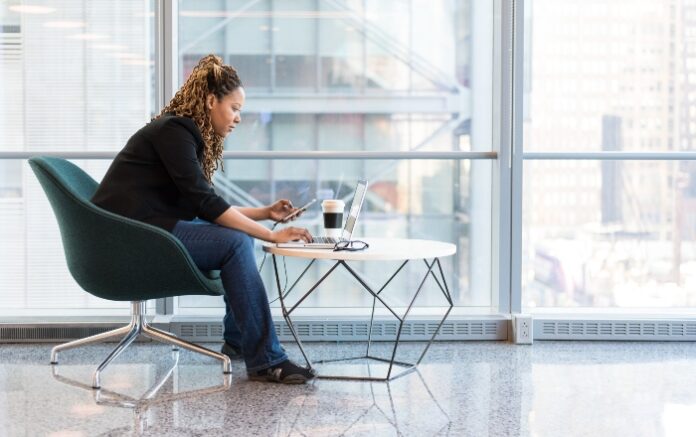All day sitting has become the norm. Previously, this was only reserved for office workers. However, as technology advances, an increasing number of people are taking on sedentary jobs. At least 50% of Australians sit all day at work, and up to 81% sit on some days.
Because sitting can harm your posture as well as your back and shoulder muscles, it’s critical to understand the effects and what you can do about them.
Understanding the Spine
Your spine is a complex and well-designed structure. It is made up of vertebrae with rubber-like discs between each one, allowing you to flex in all directions while maintaining the strength your body requires to support itself.
Gravity causes the discs to move downward when you sit. When standing, however, the back must support the weight of your body, limiting downward movement. Because your weight is on your bottom when you sit, your vertebrae sink down onto each other.
In short, you’re compressing the spine and increasing the risk of herniated discs.
As a result, the muscles in your back and shoulders no longer have to work as hard to support your back and posture.
These muscles will become weaker as you sit more. Unfortunately, weaker shoulder and back muscles result in a weaker spine and a higher risk of injury. It’s a never-ending cycle.
As a result, if you are experiencing back pain and shoulder weakness, you should see a shoulder specialist Sydney to have the problem evaluated.
It’s also worth noting that sitting all day tightens the hip flexors and can even slow blood flow to the gluts, further weakening the spine.
Taking Initiative
Most people who work in sedentary jobs are unable to switch to more active jobs. Instead, you must take corrective action.
Sit Correctly
Most people do not sit properly while working, which contributes to shoulder and back weakness. Your chair must be adjusted so that your feet are flat on the floor and your knees are the same height as your hips. Use lumbar support and keep your back against the back of the chair.
If at all possible, invest in a standing desk, which will allow you to stand for part of the day, increasing blood flow and back and shoulder strength.
Frequently move
If you sit all day, you should get up and move around at least once every hour. Take a five-minute break by walking around your office or up and down the stairs.
Begin exercising
In addition to moving every hour, you should begin exercising. It does not have to be hours at your local gym. Instead, try to do something you enjoy for twenty minutes every day. As long as you raise your heart rate, you will benefit your entire body, including your back and shoulder muscles.
Are standing desks truly the answer to back pain?
Long periods of sitting at a desk have been dubbed the “quiet killer,” worse than smoking these days. As a result, standing desks have grown in popularity as a way to counteract the effects of sitting. But are standing desks truly the answer? To truly comprehend, we must first determine what is going on with our bodies when we sit.
Our bodies are capable of adapting to almost any situation. Your body adapts to your position if you sit all day. Because of the lack of movement, your posture begins to round, then your shoulders round, and finally your chest tightens. The body adapts by restricting range of motion and tightening muscles that are frequently shortened. You lose muscle strength and may cause tissue damage. Finally, you feel tension in your back and neck, which leads to pain.
While sitting can cause common neck, shoulder, and low back pain, keep in mind that the real problem is a lack of movement.
So, are Standing Desks the answer?
Yes and no, respectively. It isn’t the only solution, but it can help many office workers with low back and neck pain.
While standing can help with a variety of issues (poor posture, tissue damage, tight quads/hip flexors), switching to a standing desk will not eliminate your pain. Your body will adapt, but standing 8+ hours per day causes its own set of issues, particularly with the feet, calves, legs, and back.
A combination of standing and sitting, as well as starting a regular exercise programmer, is the ideal solution. Simply put, you should move more!
Readers Might Also Like:

[FIRST LOOK] Meet the Cast of ‘Riches’ Season 1 on Prime Video

Bill Bellamy To Release Debut Memoir, “Top Billin’: Stories of Laughter, Lessons, and Triumph”

[FIRST LOOK] ALLBLK’s New Series, ‘Hush’ Stars Joyful Drake, Erica Mena & More…
![[FIRST LOOK] Meet the Contestants of Amazon Freevee's 'America's Test Kitchen: The Next Generation'](http://parlemag.com/wp-content/uploads/2022/11/FIRST-LOOK-Meet-the-Contestants-of-Amazon-Freevees-Americas-Test-Kitchen_-The-Next-Generation.jpg)
[FIRST LOOK] Meet the Contestants of Amazon Freevee’s ‘America’s Test Kitchen: The Next Generation’, Hosted By Jeannie Mae Jenkins

